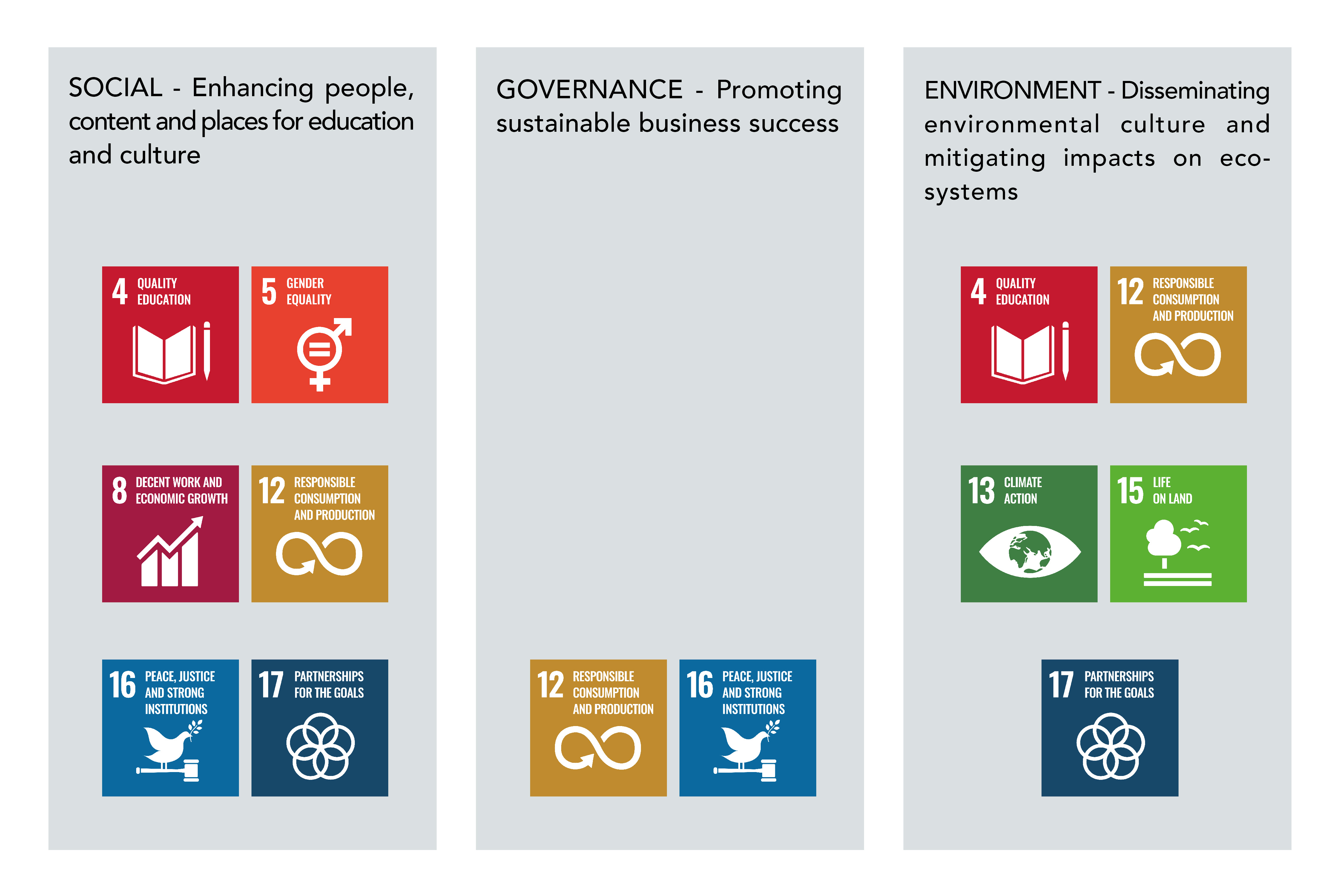Sustainability plan
The Mondadori Group has reached a level of readiness in the area of Sustainability that has enabled it to shift from a timely reporting of its operations, in compliance with regulations, to a strategic approach, i.e. aimed at defining ESG guidelines, in line with the objectives launched at global level by the United Nations.
In 2022, the first Three-Year Sustainability Plan was defined, within which strategic areas, quantitative and qualitative targets and shortand medium-term actions have been identified, aimed at assuring the continuous improvement of social, governance and environmental performance.
Constant monitoring has been carried out of the objectives, to provide a timely image of the degree to which they have been achieved and, at the same time, identify new action for the future, to continue updating the Plan.
This path has seen the participation of company management and has been enhanced by a great many stakeholder engagement activities with the participation also of new categories of stakeholders. The Group’s approach to the future in the field of sustainability is currently divided into three macro-areas of reference and eight strategic guidelines with objectives linked to the Sustainable Development Goals (SDGs) laid down in the context of the 2030 Agenda for Sustainable Development.
In March 2024, the Sustainability Plan 2024-2026 was approved.

Social
Enhancing people, content and places for education and culture
1. To become a role model in the field of diversity, equity and inclusion, enhancing and contributing to the well-being of our people, through welfare tools and skills development.
2. To promote culture and quality, equitable, and inclusive education that fosters pathways to lifelong learning.
3. To create, conceive and develop valuable content and accessible, ESG-friendly products.
4. To support cultural outposts for social development through the enhancement of bookstores, schools, museums, social channels, events and partnerships.
Governance
Promoting sustainable business success
1. To pursue sustainable business success by promoting the integration of ESG issues in governance, business plans and the operating model, also by strengthening the mechanisms for listening to stakeholders to develop paths of ongoing improvement.
2. To maintain the highest standards for protecting and managing risks and opportunities along the value chain.
Environment
Dissemination of an environmental culture and mitigation of impacts on ecosystems
1. To spread environmental culture, also through education aimed at the development of an increasingly sustainable lifestyle.
2. To mitigate environmental impacts throughout the print product life cycle, by fostering the protection of biodiversity and reducing climate-changing emissions.